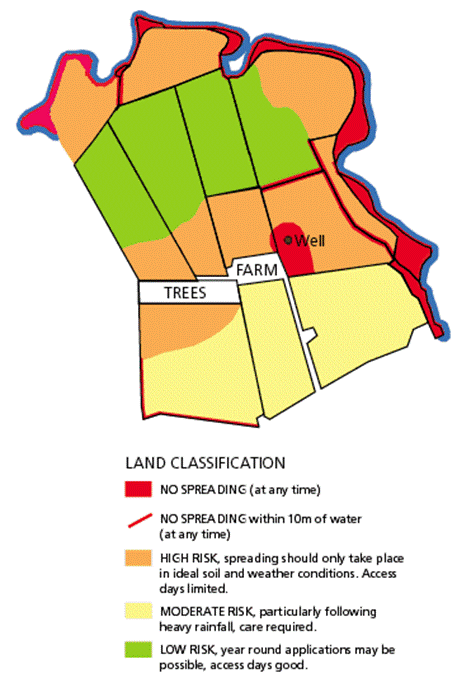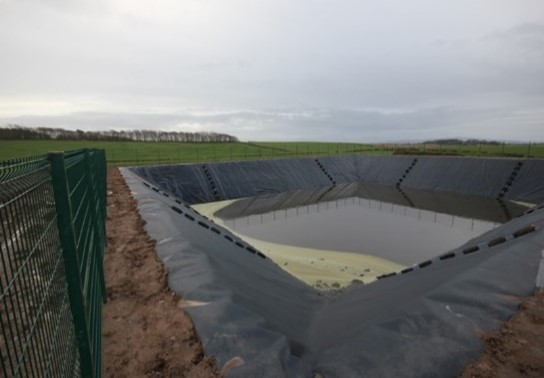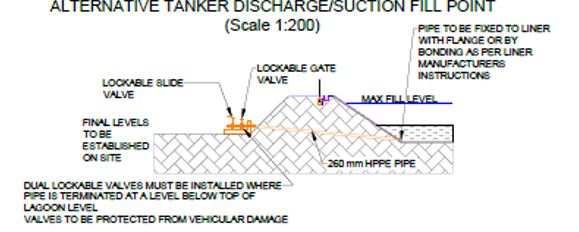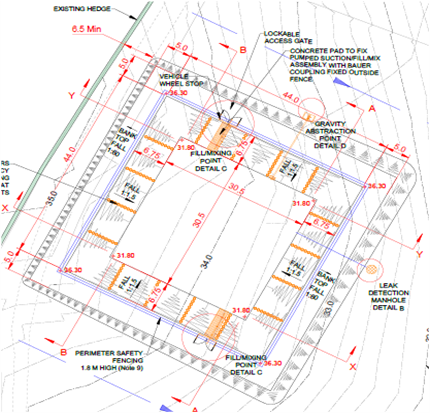Slurry Lagoon Storage and Construction
28 February 2024Six Key Steps to a Compliant Build:
1) Create a Slurry and Manure Management Plan & RAMS map
Completing a Slurry and Manure Management Plan (SMMP) is the first step to designing a compliant slurry lagoon. This will identify the business’s current slurry storage capacity and calculate the additional storage capacity needed to meet the minimum 22-week slurry storage requirement for housed livestock, or 26 weeks for housed pigs. The plan will account for excreta from livestock, parlour washings, effluent and any contaminated drainage that must be collected. It will also identify any actions that are needed to minimise the production of contaminated drainage.
A Risk Assessment for Manure and Slurry map (RAMS) must also be completed to determine the areas of spreadable and non-spreadable farmland. This will determine if the business has adequate land to effectively spread the stored slurry. More details on how to complete a nutrient management plan can be found at Supporting guidance for Slurry Storage (ruralpayments.org)

2) Appoint an engineer to determine site and design
All lagoons must be designed by a suitably qualified engineer. Lagoons must be designed to (BS5502-50) standards and in compliance with General Binding Rule (GBR) 32 of The Water Environment (Controlled Activities) Scotland Regulations 2011, (As Amended). The plans must be submitted to local authority for building warrant and to the Scottish Environment Protection Agency (SEPA) for approval. The engineer will carry out an appraisal to determine a suitable site and design for that lagoon which includes the depth and bank slope requirements. Lagoons must be lined with a SEPA approved liner and be sited 10m away from any surface water or permeable drains and 50 meters from any uncapped bore hole. Slurry extraction points must have two lockable valves, there must be concrete plinths at any mixing points and safety fencing erected.
Click photos to enlarge
3) Notify and consult with SEPA
SEPA approval is required before starting construction of any new slurry stores. Farms where slurry is produced are subject to The Water Environment (Controlled Activities)(Scotland) Amendment Regulations 2021. These regulations set out the standards that need to be met when constructing new or substantially enlarged slurry stores and that SEPA must be notified no later than 30 days prior to commencing the works. Any proposals should be discussed with SEPA at the earliest opportunity. SEPA will request a manure and slurry management plan and engineer’s drawings and may conduct a site visit. Once content with the proposal, a letter to proceed will be issued by SEPA.
4) Apply for building warrant/planning permission
All slurry lagoons require a building warrant however not all lagoons require planning permission. In terms of Class 18 of the Town & Country Planning (General Permitted Development) (Scotland) Order 1992 (as amended) an agricultural slurry lagoon is classed as an engineering operation and not as a building and as such is considered a permitted development unless one of the following caveats apply:
- The development would be carried out on agricultural land less than 0.4 hectare in area. (i.e. holding size).
- The height of any part of the works within 3 kilometres of the perimeter of an aerodrome would exceed 3 metres.
- Any part of the development would be within 25 metres of the metaled portion of a trunk or classified road.
- Any part of the lagoon would be within 400 metres of the curtilage of any protected building.
Consult your local planning authority to confirm if permission is required.
5) Appoint contractors to dig, line & install
Appoint experienced contractors to construct and line the lagoon. Ensure the contractors follow the engineer’s design and drawings. Lagoons ideally should be built in the summer when weather conditions are more favourable, and the water table is low. Ensure the liner supplied by the contractor is approved for use by SEPA.

6) Obtain a completion certificate and SEPA sign off
SEPA’s “New Structures” form should be completed. Part A should be sent to notify the intention to build the structure and should be accompanied by a set of plans. Part B should be prior to a new facility being brought into use. It must be signed by a chartered engineer to certify that it has been designed to the regulations. A completion certificate should be obtained once the construction is complete and both forms retained for the lifetime of the structure.

Related Resources
Agri-Environment Climate Scheme (ruralpayments.org)
Sam Henderson sam.henderson@sac.co.uk
Sign up to the FAS newsletter
Receive updates on news, events and publications from Scotland’s Farm Advisory Service



